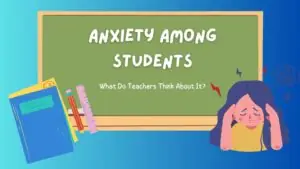The allocation of $38,000 per student in New York City’s public schools, as indicated by the Citizens Budget Commission, brings up concerns regarding the efficiency of resource distribution. In an article originally published on Rick Hess Straight Up, Frederick Hess explores alternative ways to distribute these funds to improve educational quality and student support.

✅ AI Essay Writer ✅ AI Detector ✅ Plagchecker ✅ Paraphraser
✅ Summarizer ✅ Citation Generator

Key Takeaways:
- Tripling the student-counselor ratio could provide better mental health support and guidance to students.
- Investing in advanced technology and IT infrastructure would equip students with vital digital competencies.
- Increasing teacher salaries may attract and retain high-quality educators, resulting in improved academic outcomes.
- Allocating funds for arts, physical education, and extracurricular programs promotes holistic development.
Tripling the student-counselor ratio to provide better mental health support and guidance to students
Hess suggests that the current student-counselor ratio of 1 counselor for every 325 students could be improved to 1 counselor for every 115 students. By increasing the average salary of counselors from $70,000 to $105,000, the total cost for a class of 23 students would amount to $26,000. This change would ensure that students receive more personalized attention and support, which is crucial for their social, emotional, and academic growth.
Embracing the Digital Age with Advanced Technology and IT Infrastructure
Allocating $8,000 for technology, personal laptops, and support for a class of 23 students, alongside hiring an on-site IT specialist for the school at a total cost of $5,000, would provide students with a solid technological foundation. This funding would not just enhance the caliber of education, but also provide students with vital digital competencies necessary for thriving in a progressively tech-centric global landscape.
Elevating Education Quality with Increased Teacher Salaries
Offering competitive salaries to teachers, which could attract and retain high-quality educators, will ultimately benefit the students. Hess proposes doubling the classroom teacher’s salary to $160,000 and adding an aide earning $70,000, bringing the total classroom staff cost to $290,000 for a class of 23 students. By offering higher salaries, the school district could attract and retain the best educators, resulting in a better learning experience and improved academic outcomes for students.
Fostering Holistic Development through Arts, Physical Education, and Extracurricular Programs
By allocating funds for two school-wide P.E. teachers, a school-wide music teacher, and a 4th and 5th-grade fine arts teacher (shared across six classes), all earning $120,000, the total cost for a class of 23 students would be $40,000. This investment in arts and physical education would provide students with opportunities to explore their interests and talents, promoting their overall well-being and personal growth.
Building Stronger School-Family Connections through Parent Outreach and Support
Creating a dedicated 4th-grade staffer position to coordinate parent outreach, assist parents, and provide back-office/secretarial support to teachers would cost $30,000 for each 4th-grade classroom. This initiative would improve communication between the school and families, helping to address student needs and concerns more effectively and fostering a supportive learning environment.
While the author acknowledges the limitations of this thought experiment, such as existing obligations and contractual constraints, it serves as a reminder that different choices could lead to significant improvements in NYC public schools. By rethinking the allocation of resources and exploring alternative options, the school district might achieve better outcomes for students, teachers, and parents. This process could encourage other districts to reconsider their resource allocation and strive for a more effective and impactful educational system.
Related stories:
The Post-Pandemic Puzzle: High School Diplomas Rise Amid Declining Test Scores and Attendance
Reconsidering Test Scores: New Research Supports a Holistic Approach to High School Assessment
Exploring the Impact on American Education: Terminating of Affirmative Action
Follow us on Reddit for more insights and updates.





Comments (0)
Welcome to A*Help comments!
We’re all about debate and discussion at A*Help.
We value the diverse opinions of users, so you may find points of view that you don’t agree with. And that’s cool. However, there are certain things we’re not OK with: attempts to manipulate our data in any way, for example, or the posting of discriminative, offensive, hateful, or disparaging material.